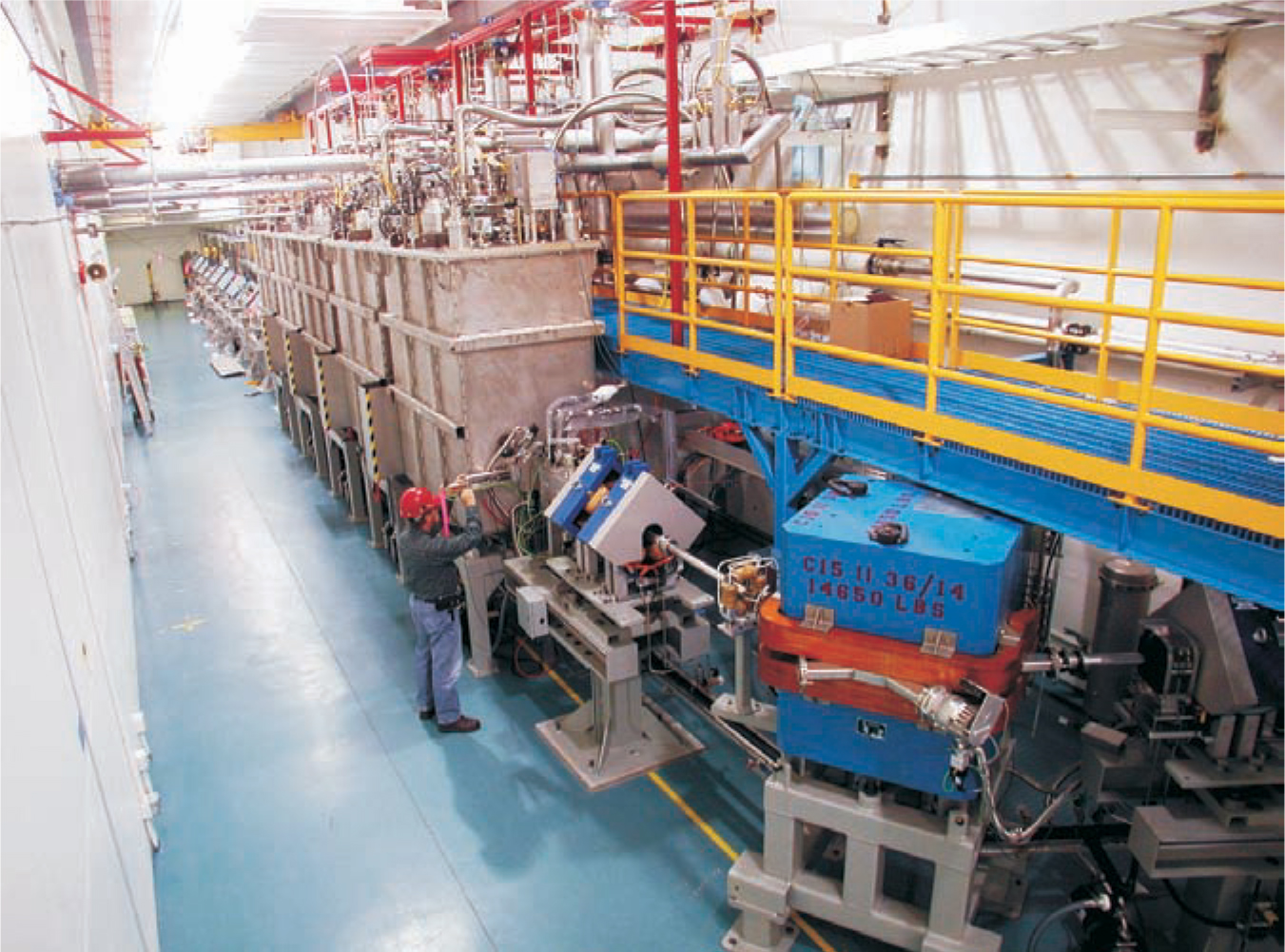Canada accelerates heavier isotopes to higher energies
DOI: 10.1063/1.2218542
The Isotope Separation and Acceleration (ISAC) facility at TRIUMF, Canada’s national nuclear- and particle-physics laboratory in Vancouver, began flexing its new muscles in April after a Can$48 million ($43 million) upgrade. ISAC-II, as the new part of the facility is known, revs radioactive isotopes to at least 4.5 MeV per nucleon, a three-fold increase; a further boost to 6.5 MeV per nucleon is planned in the next few years, and a move to heavier species will start next year. ISAC-II will be used for studies of nuclear structure, nuclear reactions, and nuclear astrophysics.
The final energy per nucleon depends on the mass-to-charge ratio, but top speeds will reach 10% of the speed of light. The key is that ISAC-II gets isotopes to energies above the Coulomb barrier, says Robert Laxdal, an accelerator physicist with ISAC-II. “It means you have enough energy so that you can penetrate into the nucleus of a target material—you can start fusing nuclei or breaking apart nuclei.” Adds TRIUMF scientist Gordon Ball, “It allows us to explore very much farther away from the valley of stability to understand the properties of nuclei which are very neutron rich or very proton rich, and to see how the nuclear forces change as you go away from stability.”
Massive upgrade
ISAC-II uses the original ISAC-I accelerator, which limits the mass-to-charge ratio to between 3 and 30. But whereas ions in ISAC-I have a single positive charge, the full upgrade will have a charge-state booster that strips off more electrons. “The limitation still exists, but we get around it by raising the charge state,” says Laxdal. “Now we can talk about a mass of, say, 150 [amu], with a charge of at least +5. Before, we could only do mass 30 and lower. Now we can do any mass.”
Besides the charge-state booster, the ISAC-II upgrade includes a superconducting linear accelerator and a 1000-square-meter experimental hall. Superconducting acceleration cavities are new for TRIUMF. “There is some innovative design in the cavities,” says TRIUMF associate director Jean-Michel Poutissou, “but we are not breaking entirely new ground.”
Two new detectors together account for about a quarter of the cost of the upgrade. TIGRESS (TRIUMF-ISAC Gamma-Ray Escape Suppressed Spectrometer) will start taking data this summer. It probes nuclear structure and transition rates by measuring the energies and intensities of emitted gamma rays. EMMA (ElectroMagnetic Mass Analyser), which was funded on 1 April, is a recoil mass spectrometer that will sort nuclei by mass-to-charge ratio to identify what reactions have taken place. The detectors will be used in both combined and independent modes to study, among other things, synthesis of heavy elements and nuclear shell structure as a function of the ratio of neutrons to protons.
Even before ISAC-II was turned on, beam time was scarce. A second beamline failed to get funding, so ISAC-II shares the existing incident 100-microamp proton beam with ISAC-I and a target-development program. “It’s a big fight amongst the three,” says Poutissou. “Changing from one to the next is complicated and can take up to three weeks. Scheduling is a nightmare.” TRIUMF continues to seek funding for a second beamline, he adds.
Also on the lab’s wish list are actinide targets. “Actinides would give you access to much more exotic beams,” says Poutissou. “It’s a big deal. There’s a lot of pressure from users.” The hurdles, he adds, are safety and licensing for handling uranium targets.
Window of opportunity
TRIUMF uses the isotope separation on-line (ISOL) method to produce radioactive species. A beam of 500 MeV protons is smashed into a thick target (physical thickness times density up to 50 g/cm2) of, for example, tantalum, creating a cocktail of nearly at-rest isotopes. The desired species is picked out and accelerated for use. In a competing approach called fragmentation, a beam of heavy ions passes through a thin target (around 5 g/cm2), resulting in a spray of energetic isotopes. Fragmentation is better suited for studying short-lived isotopes, whereas ISOL provides lower-emittance and lower-divergence beams but only for isotope half-lives of milliseconds or longer. Like TRIUMF, CERN’s ISOLDE uses ISOL, while radioactive-beam facilities at Michigan State University, the Heavy Ion Research Center in Darmstadt, Germany, and Japan’s RIKEN use fragmentation.
For now, ISAC-II “brings to the table both high-power production and really good post-[selection] acceleration,” says Argonne National Laboratory’s Jerry Nolen, a member of the design team for the US’s proposed Rare Isotope Accelerator. But, he adds, “the intensity and variety of beams even at ISAC-II is not enough to make many of the neutron-rich rare isotopes that are important for understanding things like supernovae.” That, says Nolen, will have to wait for RIA, which, if built, would be outfitted for both ISOL and fragmentation and would make twice as many species of isotopes as ISAC-II. Earlier this year, however, the US Department of Energy formed a committee to reevaluate the importance of radioactive-beam science, and asked scientists to come up with a cheaper, scaled-down project—informally called the “advanced exotic beam facility.” In its original conception, the $1 billion RIA “would have been a world-dominating facility,” says Nolen. “We are still looking for a major role, but in an area that complements what goes on elsewhere.”
“In some ways we are leading the way [with ISAC-II],” says Ball. “We get all those beams at a continuously variable energy. There will be no one else in our energy range for several years. This is our window.”

The superconducting linac at TRIUMF’s upgraded radioactive isotope accelerator was successfully tested in April. The five cryomodules (large off-white blocks) house 20 RF cavities. The beamline to the experimental hall is visible in the distance.
TRIUMF

More about the Authors
Toni Feder. American Center for Physics, One Physics Ellipse, College Park, Maryland 20740-3842, US . tfeder@aip.org
